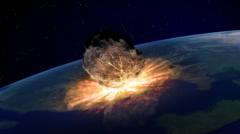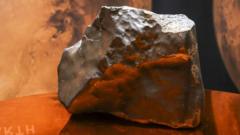A groundbreaking study led by Harvard University scientists has explored the impact of a gigantic meteorite, discovered in 2014, that struck Earth over three billion years ago. This meteorite, dubbed S2, was estimated to be a staggering 40-60 kilometers wide—200 times larger than the asteroid that led to the dinosaurs' extinction. The impact, which caused a 500 km wide crater in South Africa, resulted in an unprecedented tsunami and intense boiling of the oceans.
"The force from S2 was tremendous," stated Professor Nadja Drabon, the research leader. "The tsunami generated would have dwarfed any modern impacts, ripping up the seabed and creating a cloud of dust that enveloped the planet." The explosion released both molten rock and immense heat, raising ocean temperatures and resulting in the significant loss of photosynthetic life.
Despite such devastation, findings indicate that early life was surprisingly robust. The research team traveled to the Eastern Barberton Greenstone Belt in South Africa, where they collected rock samples to analyze the aftermath of the crash. To secure these pieces, they navigated treacherous terrain accompanied by rangers equipped to protect against wildlife and poachers.
Their laboratory analyses uncovered evidence that the violent tsunami and subsequent nutrient churn brought phosphorus and iron essential for microbial life back to the surface. "The catastrophic disturbance acted like a giant fertilizer for early life," Drabon explained. This facilitated the rapid resurgence of simple organisms after the impact, showcasing an unexpected resilience and adaptive capacity akin to bacteria rebounding after disinfection.
These findings challenge the long-standing notion that asteroid impacts solely led to extinction, instead suggesting they may have incentivized flourishing ecosystems. The team's work has been published in the prestigious journal PNAS, indicating a pivotal shift in understanding Earth's ancient environmental history and how life adapted under extreme conditions.
In a world increasingly aware of resilience in the face of climate challenges, these insights remind us of the extraordinary capacity for renewal in nature.




















